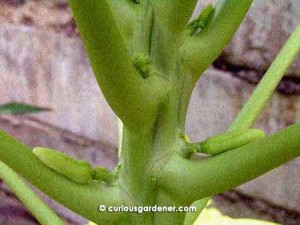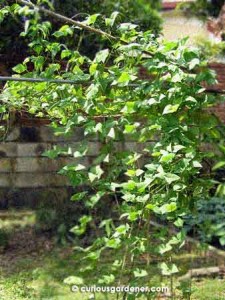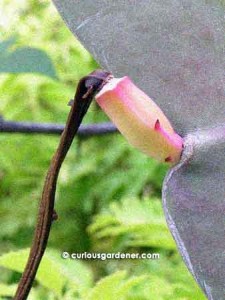To me, the Bachelor’s Button flower is a round, multi-petaled purple flower. I have since learned that the name also refers to other flowers that don’t look like the one I know – and that other names for the flower I know are Globe Amaranth and Gomphrena Globosa. I find them very apt, since the flowers are indeed very globe-like.
The variety with the dark purple flowers is the most well-known, although some years back, I had the pale lilac variety that I found very sweet. I’ve also heard of, but never seen, a white variety.
The plant is an annual – which to me is a misnomer, because it lasts for only about half a year, in my experience. That’s why I gave up growing them back then. Grown from seed, they take about 6-8 weeks to reach flowering maturity; they flower for 2-4 months, then start dying off. If you want to maintain their presence in the garden, you have to remember to pluck off a dried flower or three and use those seeds to start new plants while the current plants are in full bloom.
If you don’t have the patience to grow them from seed (which isn’t that difficult if you’re patient), they are also easy to grow from cuttings. Someone accidentally beheaded my young plants, and the stems I salvaged and stuck back into the ground managed to grow and thrive.
I like these plants quite a bit – they’re fairly fuss-free, don’t need frequent watering and they brighten the garden with their 1.5cm pompom-like flowers. You do need to give them space to spread out a little, though. The stems can support themselves up to about half a metre, then they need to lean on the ground and grow upwards again. When there are enough stems crisscrossing and supporting each other, the bushes can grow even higher.
There’s a cute old wives’ tale associated with these flowers – they supposedly keep eligible men away, and a lady who initially didn’t believe this kept her flowers growing until, in a fit of frustration, she got rid of the plants. Lo and behold, she finally managed to snag a man! A family friend told me this in great earnestness, so I’ll take her word for it – tongue firmly in cheek… It’s a cute story, though!
© 2011 curiousgardener.com All rights reserved.







